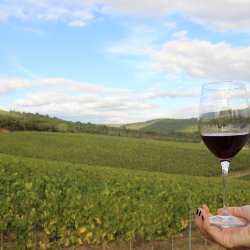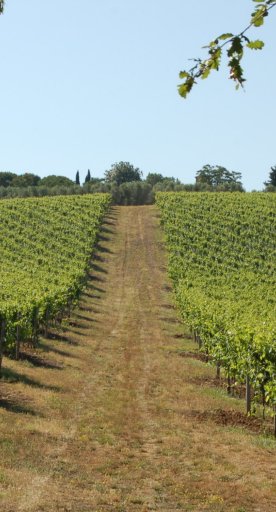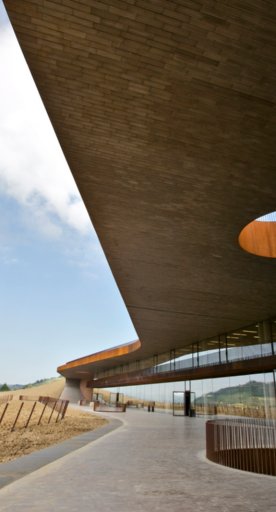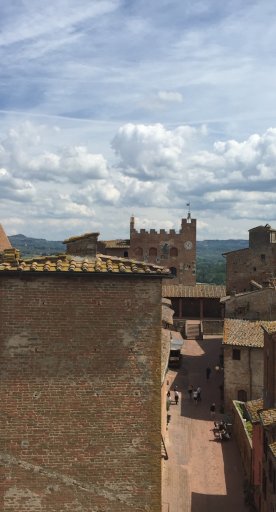Chianti Classico wine tour, admist past and future
Explore the best of the Chianti wine region
Chianti is perhaps Italy's most famous wine, which gets its name from an area of Tuscany that is also famous for its food, lush rolling hills and medieval towns. The Chianti is a land of ancient winemaking traditions (since Etruscan times), but the earliest documents identifying this area as a wine production zone date to the 13th century. Until the 18th century, Chianti wine was produced only using Sangiovese grapes, but since the 19th century, wine producers began to mix different varieties to improve the quality of the wine. In the 1900s, the demand for Chianti increased dramatically and other areas of Tuscany began to imitate the wine, which led to the creation of an organization to prevent frauds: in 1924, a group of producers formed the Consortium for the Defense of Chianti Wine, and, in 1932, a decree gave the historical Chianti area the right to use the distinctive appellation of "Classico”.
Nowadays, the designation of “Chianti Classico” doesn’t only refer to the area of production. Classico wine has to respect specific rules: its blend must be made from 80-100% of Sangiovese grapes, while other red grapes can be used up to only 20%. The Chianti Classico label refers to the oldest traditional area in the Chianti region, which stretches between Florence and Siena, and its quality and production method is identified by the unmistakable black rooster emblem. How much has the production method changed over the centuries? Discover the answer by visiting the wineries in the Chianti Classico area. I recently had the opportunity to compare the production methods thanks to the wineries owned by the Antinori family, one of the oldest winemaking families in Tuscany.
-
1.Badia a Passignano Abbey
-
2.Antinori Cellars in Bargino
Badia a Passignano Abbey

The Badia a Passignano Abbey is located in Sambuca Val di Pesa and is an ancient monastery dating to 395 AD. The Antinori family estate covers 223 hectares that rise to an altitude of 250-300 metres above sea level. The abbey is a milestone in the production of Chianti Classico, considering that a centuries-old vitis vinifera vine was found in the terrain surrounding the abbey in 1983.
Monks of the Vallombrosian Order still live here, but you can visit the ancient wine cellars and abbey. Take a tour through the wine cellars at the Osteria di Passignano restaurant next to the abbey, during which you’ll see the old fermentation tanks, ancient barrels and historic production methods. The abbey’s wine cellars currently house about 2,000 wooden barrels, where Badia a Passignano Chianti Classico Riserva is aged. A refreshing tasting of four wines usually follows the guided tours.
Antinori Cellars in Bargino

The Marchesi Antinori Chianti Classico Cellar is located in the Chianti Classico region, just 20 minutes from Florence and 30 minutes from Siena, a must-see attraction for visitors to Tuscany. These cellars opened in 2012 and are a tribute to the community and the Chianti Classico territory. The building was constructed using local materials and with the utmost respect for the environment. The new Antinori headquarters are close to the highway, but the building is almost invisible because it’s literally inside a hill, which was cut into to build the winery and then covered with the same soil, planting native and ancient vines like Ciliegino, Colorino, Mammolo and Black Malvasia. In three years, the winery will be completely surrounded and covered by these vineyards, which are not intended for wine production but to preserve their ancient roots.
The Marchesi Antinori headquarters include the winery, two tasting rooms, a restaurant (Rinuccio 1180, named after the first member of the Antinori family), an auditorium, a museum, a bookshop and, of course, a wine store. The following wines and olive oil labels are produced here: Villa Antinori Chianti Classico, Marchese Antinori Chianti Classico Riserva, Pèppoli Chianti Classico, Vinsanto del Chianti Classico, Antinori Laudemio Extra Virgin Olive Oil and Antinori Peppoli Extra Virgin Olive Oil.

The cellars were constructed for production reasons but also to welcome the public, offering visitors the chance to discover how wine is made, from the vineyard to the bottle. Wine lovers, architects, families and school groups (in other words, everyone) can visit the Antinori Cellars in Bargino. In this area, many wineries give tours and have a cellar or tasting rooms. On the website of the Consorzio del Chianti Classico, you can search for producers that offer tastings and cellar tours. Choose your favourite and contact them to reserve your Chianti Classico experience.
For an idea about the best food and wines to taste in the Chianti area, check out our list. If you would like to explore the Chianti area, read this itinerary suggested by our team.




















































